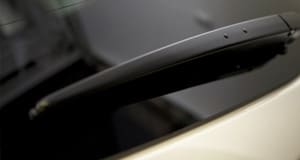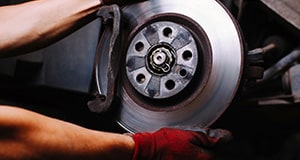Welcome To Our Ford Parts Department
Car repairs are never fun to deal with, but the situation is much worse if you can't find the right ones! If you are in need of Ford parts for your vehicle, you can find them at Peoria Ford. From headlights and bumpers to major mechanical parts like engines and timing belts, we are proud to offer customers nothing but the best for their beloved Ford vehicles.
The parts we use are called Original Equipment Manufacturer (OEM) parts, and they're specifically designed to fit your make and model of car. This eliminates many problems, ranging from safety concerns to having to replace a part again earlier than expected. If you're looking for a part that we don't currently have in stock, let us know what you need and we'll get it as soon as possible.
Ford Direct's Department maintains a comprehensive inventory of high quality genuine OEM parts. Our highly knowledgeable staff is here to answer your parts inquiries. Should we not carry a part for which you're searching, we can always order it for you and receive it within a timely manner.
Ford Parts Request
* Indicates a required field
Your privacy is important to us.
Our Dealership takes your privacy seriously and does not rent or sell your personal information to third parties without your consent. Read our privacy policy.
What Happens After I Order a Part from Peoria Ford?
If you know the name or inventory number of your part, please use our online form to place an order. Otherwise, feel free to call and a Parts Department specialist will determine exactly what you need. Upon submitting your information we will:
- Respond to you promptly via your preferred contact method.
- Ask any additional questions required to identify your parts request.
- Confirm your order and pricing.
What are the Benefits of OEM Parts vs Aftermarket Parts?
OEM Parts have Dependable Quality
In the auto industry, you can get one of two types of parts for your vehicle. One, which is offered through dealerships, is OEM parts. OEM parts are made specifically for a certain type of car. They are built to a high standard of quality, and they come with a warranty that guarantees they will last a certain period of time. The alternative is aftermarket parts. Aftermarket parts are used in many independent repair shops. Unlike OEM parts, they're not guaranteed to last for any period of time. This means that when they break, it's on you to spend the time and money having them replaced.
Warranty and Widespread Support

While some people are drawn to aftermarket parts because of their cost, which is often lower than that of OEM parts, they are usually not getting a good deal in the long run. When you get an OEM part, you leave the dealership knowing that your car is outfitted with the best possible component. An added advantage of OEM parts is that many Ford dealerships across the country generally offer a reciprocal warranty. That means if a warrantied part breaks down when you're not near home, you can bring it to the closest Ford dealership for replacement at no cost. In contrast, there's no assurance that the aftermarket part will perform as it's supposed to. There is no warranty on an aftermarket part, which means you essentially have to keep your fingers crossed after your car leaves the repair shop that the part won't break on you.
Proper Fit and Ease of Replacement

OEM parts are carefully built for a specific make and model of car. You can even order custom parts and accessories if they are labeled as “OEM.” The assurance that these parts fit your Ford like a glove is critical, as it means the part won't risk damaging your car or pose a safety hazard if it breaks when you're driving. This is especially true for vital inner components, like the engine and the transmission, or the wheels, which are the main point of contact between your car and the ground.
An ill-fitting part can also cause damage to other parts in your car, which can end up costing you more money in the long run and make the aftermarket part far more expensive than it should've been. Along with fitting securely when you're driving, OEM parts are much easier to replace than aftermarket parts when the time comes. A mechanic can simply remove the part and make a simple switch when needed.
Contact us today if you want to inquire about a particular part of your vehicle.
Contact
Parts Hours
- Monday 7:00am - 6:00pm
- Tuesday 7:00am - 6:00pm
- Wednesday 7:00am - 6:00pm
- Thursday 7:00am - 6:00pm
- Friday 7:00am - 6:00pm
- Saturday 7:00am - 5:00pm
- Sunday Closed